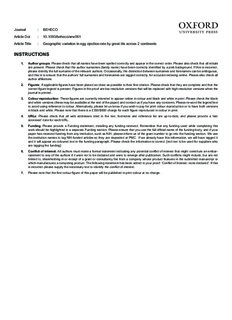Geographic variation in egg ejection rate by great tits across 2 continents
Liang, Wei; Møller, Anders Pape; Stokke, Bård Gunnar; Yang, Canchao; Kovařík, Petr; Wang, Haitao; Yao, Cheng-Te; Ding, Ping; Lu, Xin; Moksnes, Arne; Røskaft, Eivin; Grim, Tomas
Journal article, Peer reviewed
Accepted version

Åpne
Permanent lenke
http://hdl.handle.net/11250/2458896Utgivelsesdato
2016Metadata
Vis full innførselSamlinger
- Institutt for biologi [2575]
- Publikasjoner fra CRIStin - NTNU [38127]
Sammendrag
Hosts of brood parasites may vary geographically in their ability to resist parasitism. In contrast, geographic variation in defenses, such as egg rejection, is not expected to be present or vary geographically in unsuitable hosts. We examined spatial patterns of resistance in the great tit Parus major, a passerine that is a textbook example of an unsuitable host for brood parasites because of its hole-nesting habits. We experimentally tested for spatial variation in foreign egg rejection in 395 nests across latitudinal gradients in China (5 populations) and Europe (7 populations). In China, egg rejection rates were very high but showed a latitudinal gradient from 100% in the south to 52% in the north. In Europe, rejection rates were very low (on average only 4%) and did not vary latitudinally. The egg ejection rate patterns matched geographic patterns of parasitism risk with rejection probabilities decreasing with latitude (a surrogate measure of the diversity of brood parasites). The present study for the first time challenges the idea that hole-nesting birds did not evolve resistance mechanisms against brood parasites and highlights the importance of large-scale geographic comparisons in ecological research.